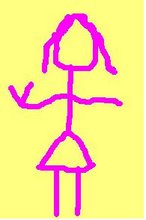Not to patronize anyone, but basically, mockumentaries are fake documentaries: they present themselves to the public as if they were the real thing, but they are all set ups, and mostly with the intention of making fun of the “realness” of the doc genre. The irony is that by doing that, they manage somehow to show reality in way that the real documentaries could never do. Examples of movies like that are Borat and This is Spinal Tap.
One of the best mockumentaries ever made is certainly Woody Allen’s Zelig (1983). It tells the very unrealistic, yet moving, tale of a “chameleon man” named Leonard Zelig. He suffered from a condition that allowed him to “adapt” to whatever circumstances he was facing, not only psychologically, but also physically. For instance, if he was amongst Native Americans, he would not only behave like them, but he would also look like them. The idea itself is very creative and original, but Allen goes beyond that and constructs a narrative that is both funny and cohesive, making Zelig one of his best films ever.
What is reality anyway? Isn’t it always a construction, either in our minds or fabricated by the Media? Even journalism, for example, that sells itself as if it was reality as it is, is actually always some sort of set up: choosing what to talk about, how to talk about it, how to edit, or even just by choosing where to focus the camera on, is already building up a certain way to see the world accordingly to specific interests. Mockumentaries, especially in cases like Zelig, turn the realistic order upside down, and by doing that they are able to show the other side of the coin.
It is true that Allen has had many ups and downs in his prolific career, but Zelig surely counts as one of his highest moments. He mixes archive footages, fake interviews and well acted misé-en-scenes that along with a very credible voice-over narration turn the unbelievable story into a commentary about the History of the World in the early twentieth century. It features Psychoanalysis, the Nazi regime, silly songs and dances about the human chameleon and even testimonies of people like Susan Sontag. The film manages to entertain and make us think at the same time. At the end, we are all a bit like Zelig, as Zelig has a bit of all of us.
To finish off, I’ll leave you with a very real picture from the day when there was only a glass wall between Woody and me.

